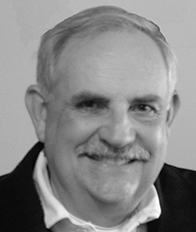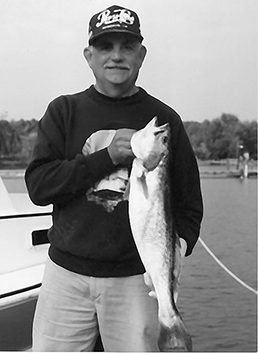ALAN v40n3 - TAR @ 40: TAR Editor 1979-1985
TAR @ 40: TAR Editor 1979-1985

It has been over 21 years since my retirement from the academic world. I am now retired from my 20-year second career as a commercial fisherman. Hence, a bit of fog about an editorship running Spring 1978 to Winter 1984. However, in my attic was nearly every issue from Spring 1975 (Vol. 2, No. 2) to Spring 1991 (Vol. 18, No. 3). My memory thus bolstered, I can share some facts about the development of TAR. No consideration of this subject can be complete without the knowledge of Alleen Pace Nilsen and Ken Donelson, the true founders who supported my efforts. Their work and spirit have always been an inspiration and a fine example of professionalism. If you really want to know something, there is your ultimate source.
Out of Arizona State in the fall of 1973 came the beginning known as “News from ALAN.” It was mimeographed sheets folded in half and stapled. The format was not what was important; it was the content, which was a gift to members who cared about our body of literature. By winter 1975 (Vol. 3, No. 2), the name changed to “The ALAN Newsletter.” With that change came an increase in format to 8½” x11” and “Clip and File” reviews. Ken and Alleen produced their last issue in spring of 1978 (Vol. 5, No. 2). After all the work of beginning a national publication, they were ready to pass the job along to some willing soul. Fortuitously, I was at hand and ready for confirmation by the ALAN Board of Directors.
That move was, for me, a wonderful challenge, but always with full support and encouragement from the former editors. The task of being editor was complex and multifaceted. Let me enumerate some of what was involved. To begin, recall the world before personal computers. The entire job of physically producing and distributing was more cumbersome. Also, mine was a solo act, with the occasional exception of an enterprising graduate student.
I had to locate a print shop and secure quotes on the cost of printing. That required selection of three different paper stocks—cover, Clip and File pages, and regular content. Arrangements were made with the post office for a special postage rate. Production was a separate segment of effort, beginning with a typesetter. Remember this is before desktop publishing. Fonts had to be selected for the various segments of the newsletter. Sheets of content, sometimes typed and sometimes handwritten, were delivered to the typesetter. After waiting for a phone call telling me the proofs were ready to be picked up, these proof sheets had to be proofread and returned to the typesetter, who repeated the process until everything appeared publishable.

The approved proof sheets were then physically pasted onto blank sheets, each representing a page. The paste-up was carried to the printer who photographed each page and proceeded to printing and assembly. That resulted in the finished newsletter being loaded into cardboard boxes and carried to my office. Next, a printed address label was applied to each copy. (Mary Sucher labored for years maintaining ALAN’s mailing list and sent me a copy before each issue. Eventually, I was able to handle production of mailing labels on an Apple II, but the old large floppies had to be constantly updated.) Thus addressed, they had to be sorted and bundled by ZIP code, as required by the post office. Finally, my pickup truck carried the load to the post office for mailing. Then it was time to head to my favored pub to relax and await feedback from members.
If you notice, so far I haven’t mentioned much about editing. Such was the job at the time. Beginning with the Winter 1979 issue, our newsletter became The ALAN Review . A year later saw the first appearance of a logo for the cover. That entailed my finding a graphic artist who could embody something of our spirit—thus the circle of four symbolic readers. That issue, Winter 1980, was the first incorporating a review board, thus making it a referred journal.
Our desire to expand circulation and content required funding beyond what ALAN could provide. By then, I had well-established contacts among publishers. Drawing upon my earlier career as a traveling salesman (you didn’t know that), I began selling our “product” as an excellent platform to advertise their wares. After checking similar publications, I established advertising rates and included the first ad from Scribner-Bantam in Fall 1979. By diverse means, I secured mailing lists of related publications and began sending fliers and subscription forms to hundreds of potential readers/members. Particularly ripe prospects even received a sample copy of an earlier issue. Mary Sucher made substantial contributions through her frequent travel overseas. When I ended my editorship, we had paid circulation in twelve countries. I am proud of my hucksterism. I count it a unique talent within the profession, and I enjoyed using it for ALAN’s benefit.
But what about actual editing? As you readily surmise, it constituted a relatively minor portion of my effort, but nonetheless important. As with every other aspect of my editorship, there were many facets. As mentioned earlier, I established working relations with many publishers. This resulted in their sending me approximately 2,000 books a year for possible review. Recognizing the advantage to publishers of having their books reviewed provided me leverage for securing advertising, and a productive cycle ensued.
Giving each of these arriving books a fair look/ reading partially explains my preferring outdoor activities in retirement. (You have surely heard of burnout.) After selecting the proper number of books for review, I mailed each to a reviewer of my choice. I had to learn the various interests and strengths of these colleagues. Book selection followed two principles: either the author was well established and readers needed to have the new work brought to their attention or the new work did not measure up to the author’s previous books, in which case readers would surely welcome guidance in managing their expectations—I believe that deserved negative reviews are important. Other books were selected for their apparent quality and the need for a relatively new author to receive recognition.
Each issue had an original article by an established author. That entailed contacting authors and/or their publishers to arrange for their article fitting my guidelines. Once received, these pieces of writing had to be edited, some more and some less. The varying quality among recognized authors proved to be eye opening. I am happy to say that the disappointments were few.
Other articles were usually of the over-the-transom variety. I was happy to receive them, as in the early years good copy was sometimes scarce. Overall, members came through with worthy pieces. Then there were informational items, resulting in a portion of the issue serving as a bulletin board and honoring our publication’s original intent. All articles, news items, and reviews received careful attention through the actual editing of my editorship.
There you have it—the inside view of my 1978 to 1984 editorship. I am sure I have missed some bits of the complete process, but this should serve to convey a feel for the job. As for my view of our field at that time, I recommend an article I published in English Journal : “Adolescent Literature: Changes, Cycles, and Constancy” (Vol. 74, No. 3, March 1985, pp. 94–98)